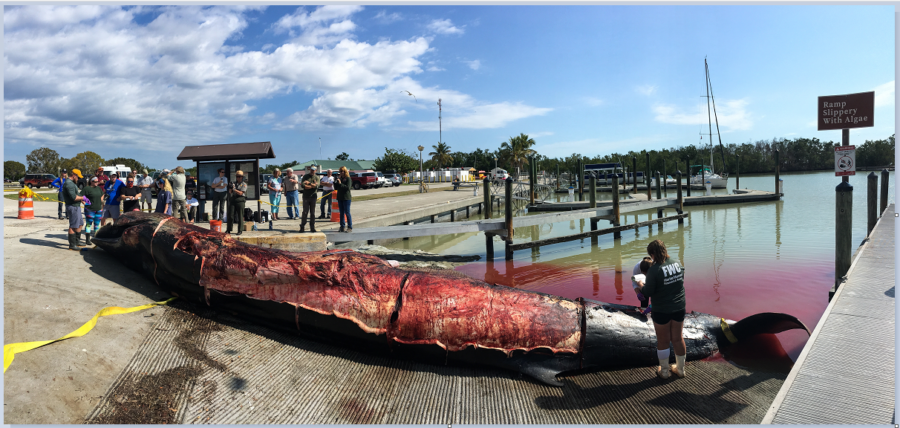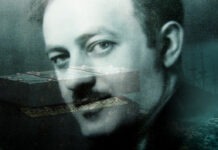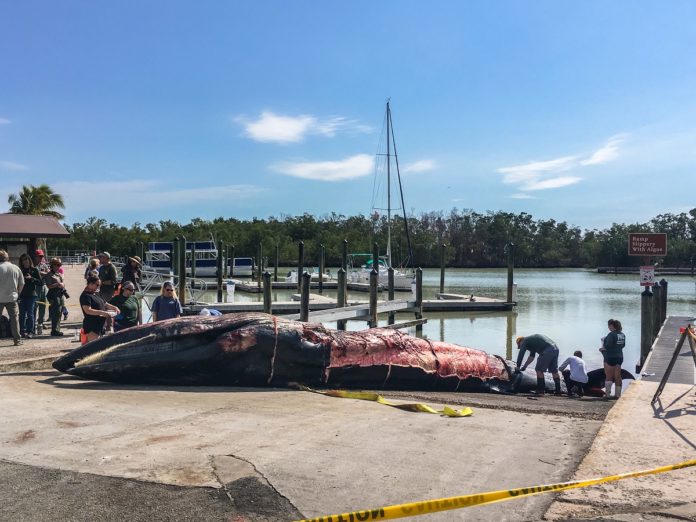
In January 2019, a 38-foot, 30-ton whale washed up on Sandy Key in the Everglades. I happened to be camping at Flamingo, by chance, and ran over to the Marina to watch the necropsy (non-human autopsy).
“Huh, so that’s how big a whale is,” I thought to myself, having never actually seen one in or out of the water. “That’s not as big as I thought it’d be.”
We walked around and around its body, which took up most of the boat ramp, as researchers worked to take tissue and skin samples for genetic testing.
From initial observations, several Florida Fish and Wildlife Conservation Commission scientists and Everglades park rangers told me the whale looked underweight and that there was a hard piece of plastic in its stomach, something that was ultimately determined to have caused its demise.
We watched a massive flatbed truck come with a crane attached, hauling the dissected body on top of it. Covered in a tarp and with its tail sticking off the bed, the whale was driven to the Smithsonian National Museum of Natural History in Washington, D.C. I imagined that would be quite the sight to behold driving next to it on the highways, and I was a little jealous of the people who would get to have that unique experience.
It would be buried there for a few years and then the bones exhumed and archived, we were told.
Most observers guessed it was a Bryde’s (pronounced “broodus”) whale, a rare species of baleen whale usually found in warm, temperate waters including the Atlantic, Indian and Pacific. Baleen whales are named after the baleen plates on the side of their mouths that act as strainers when they feed. In this famous family of cetaceans are also blue, humpback and bowhead whales.
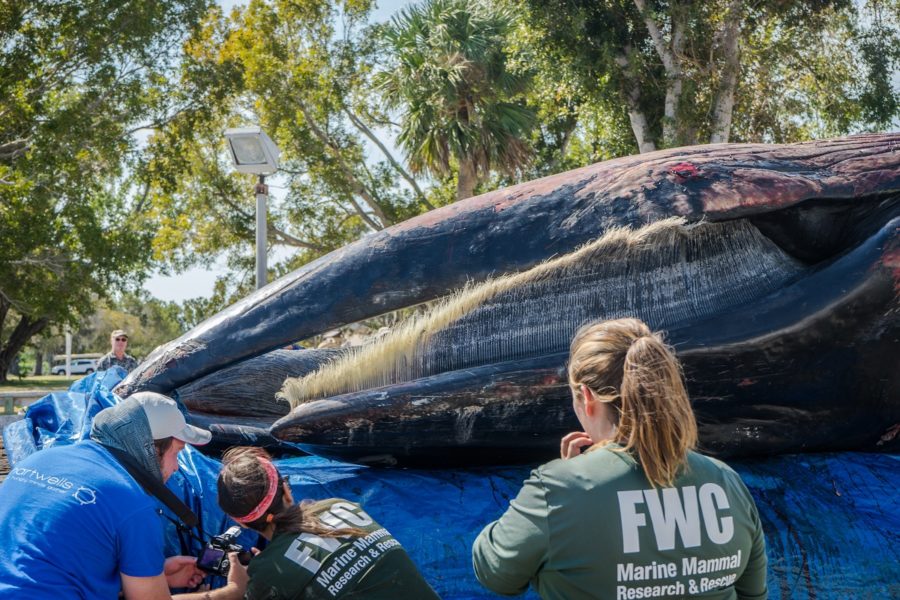
That was two years ago. I’d forgotten about the whale, what with coronavirus and work and life going on, until a news story a few weeks ago caught my eye: “A whale died in the Everglades. Scientists now think they found a new species,” the Miami Herald headline said.
“Wait, a dead whale in the Everglades. Another one? Is that – could that be – my dead whale in the Everglades?” I wondered excitedly.
A closer inspection of the details and accompanying pictures confirmed it to be true. Just under two years from when the whale first washed up in the Everglades, NOAA scientist Patricia Rosel made the startling announcement: the Everglades whale was actually a new species.
In the journal Marine Mammal Science, Rosel outlined exactly why she and her team believed that the mammal was a “Bryde’s-like whale” instead of an actual Bryde’s. The researchers had been studying the population of “Gulf of Mexico Bryde’s whales” that this individual came from for years. Reviewing records and limited genetic testing, they had a hunch it might be a new species, but needed further “genetic and morphological evidence.” They needed a body.
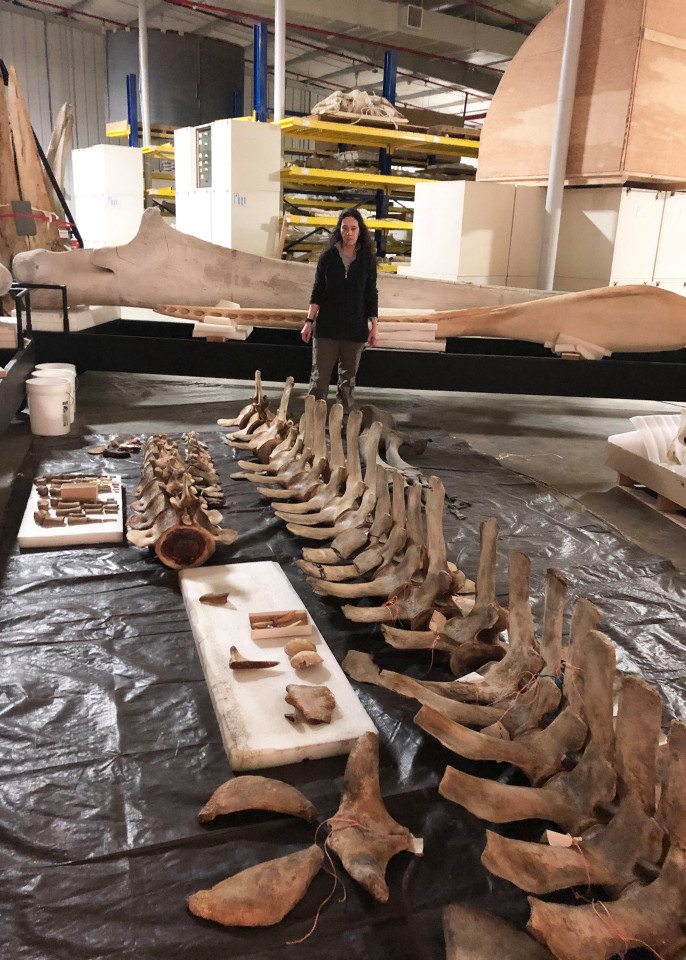
Enter our poor Sandy Key whale.
After the unfortunate animal was exhumed, bones now clean and ready for examination, Rosel went to Washington D.C. to look at its skull. Her instincts were confirmed: the “Bryde’s whales of the Gulf of Mexico” were actually not Bryde’s whales at all.
She named the new species a “Rice’s whale,” after biologist Dale Rice, who was the first to recognize that Bryde’s whales (now appropriately named Rice’s whales) lived in the Gulf of Mexico, NOAA announced.
In the paper, Rosel noted that Rice’s whales behave differently than their Bryde’s cousins. Firstly, their lineage is geographically confined to the Gulf of Mexico; Bryde’s are ocean-going travelers. The Gulf whales also don’t feed at the surface, instead “lunge diving” to feed on the ocean floor during the day, the paper explained.
“This type of bottom feeding is unusual” among similar whales, Rosel wrote in the paper. “Further work to identify primary prey species and foraging behaviors is needed and will be important for identifying potential threats and important habitat for these whales.”
Scientists knew of this specific population before, when they thought they were Gulf of Mexico Bryde’s whales. Now that they’ve confirmed a new species, they also warn that there are only about 33 of the whales left. According to the International Union for Conservation of Nature, this means the newly-named Rice’s Whales are critically endangered and at risk of extinction.
If the Society of Marine Mammalogy Committee on Taxonomy formally accepts the Rice whale as a new species, NOAA will begin the regulatory process to list it as an endangered species under the Marine Mammal Protection Act. Until then, it will retain its protected status under the Endangered Species Act (because it was previously listed as an endangered subspecies, the Gulf of Mexico Bryde’s whale) and under the Marine Mammal Protection Act.
As one of my good friends who was with me that day said when I texted her the Herald article at 1 a.m. (sorry, Ellen!), “How amazing. It’s very cool to be a part of history!”
Very cool indeed.
